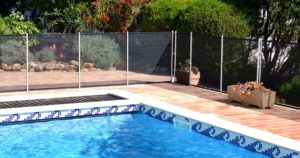CPSC Report: Child Drowning Rate Remains Too High
June 18, 2021 According to a recent report from the Consumer Product Safety Commission or CPSC, child drowning remains the leading cause of unintentional and accidental death for American youth between the ages of one and four-years-old. The American Red Cross (ARC) estimates that that more than 105 million children, teens and adults swim annually. With summertime steadily approaching, now is the right time to brush up on critical swimming safety tips for infants and young children as well as other ways to prevent avoidable swimming-related tragedies that happen every year.
According to a recent report from the Consumer Product Safety Commission or CPSC, child drowning remains the leading cause of unintentional and accidental death for American youth between the ages of one and four-years-old. The American Red Cross (ARC) estimates that that more than 105 million children, teens and adults swim annually. With summertime steadily approaching, now is the right time to brush up on critical swimming safety tips for infants and young children as well as other ways to prevent avoidable swimming-related tragedies that happen every year.
Statistics on Child Drownings
One of the CPSC’s main concerns as we enter this summer is that fewer children took swimming classes during the COVID-19 pandemic, putting them at increased risk for sustaining water-related injuries. Other known risk factors for child drownings are age, limited experience around bodies of water and/or swimming, lack of supervision, and an absence of barriers around pools or spas that effectively prevent access. Here is a glimpse at the CPSC’s most recent data available on child drowning injuries and deaths:
- There were an average of 397 reported pool-or-spa-related fatal drownings per year for children 15-years-old and younger
- An overall increase in pool-or-spa related fatal drowning incidents in children under 15
- 78% of nonfatal drowning injuries occurred in children under five
- Three-quarters of total reported fatal drownings involved children under five-years-old; 83% of these fatalities occurred at residential pools
- Doctors treated a total of 5,800 children and teens in hospital emergency departments for nonfatal swimming-related injuries in 2020
Although the number of fatal and nonfatal swimming-related injuries was slightly lower in 2020 than it was in 2019, the CPSC warns that the discrepancy is largely the result of stringent social distancing guidelines and pool closures that occurred during the pandemic.
Simple Steps to Improve Pool, Spa and Swimming Safety
Despite the numerous dangers associated with swimming, particularly for infants, children, and teens, the goods news is there are steps we can take to limit preventable accidents from occurring and to keep swim time safe and fun for everyone involved. Here are some of the CPSC’s safe swim recommendations for families to vigilantly observe:
- Never leave children unattended in or near any body of water. This includes pools and spas, bathtubs, decorative ponds, buckets, fountains, and more. To prevent unsupervised access, designate a “Water Watcher”. The Water Watcher should be alert and not participate in any distracted behaviors like reading, texting, or using a smart phone
- Get approved First-Aid and CPR training
- Learn how to swim and teach your child how to swim
- Keep children away from pool drains, pipes, and other openings to prevent entrapment
- If you own a pool or spa, be sure to install layers of protective barriers (like self-closing and self-latching devices, pool covers, door alarms, drain covers, etc.) that are useful at guarding all potential unsupervised access points
Premises Liability for Homeowners and Businesses
Owners of public and private pools are equally obligated to provide a safe environment for invitees. Public pool owners, for example, must provide sufficient emergency safety equipment in the case of a patron being injured. Public pool owners may also be held liable for injuries that result from a lack of adequate supervision (like a lifeguard) or broken or damaged pool equipment.
Homeowners that invite guests to their property can also be held liable for injuries and damages if they fail to keep their pool in good repair or to warn guests of any imminent hazards that may be present. Homeowners with pools or spas have a legal obligation to provide a safe swimming experience for visiting family and other guests. Here are some things that homeowners (and public pool owners) can do to make sure everyone’s swimming experience is both a safe and pleasant one:
- Supervise all children and ensure that inexperienced swimmers use appropriate safety equipment
- Establish rules for your pool, like no running, no horseplay, no diving, and so on. If an invitee is not following the rules, it is a good idea to ask them to leave. While it may cause hurt feelings, it can also prevent a catastrophic injury from occurring
- Clearly mark which is the deep end and which is the shallow end. Countless people are injured – some of them permanently – from diving into the shallow end of a pool and hitting their head on the bottom
- Keep the water clean. By maintaining a proper chemical balance, pool and spa owners can lessen the risk of unpleasant injuries resulting from overexposure, like rashes, ear aches, and other illnesses
To learn more about the CPSC’s recent report on fatal and nonfatal swimming-related injuries in children, you can visit this page.
If you have a legal question or concern about an injury that you or a loved one sustained at a private or public pool or spa, someone at our firm can help. To speak with an attorney, contact a representative online now.
Philadelphia Personal Injury Lawyers at Galfand Berger, LLP Representing Injured Individuals Since 1947
Galfand Berger LLP has offices located in Philadelphia, Bethlehem, Reading and Lancaster, we serve clients throughout Pennsylvania and New Jersey. To schedule a consultation, call us at 800-222-8792 or complete our online contact form.
 Google Screened
Google Screened
